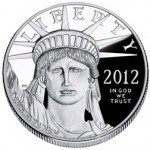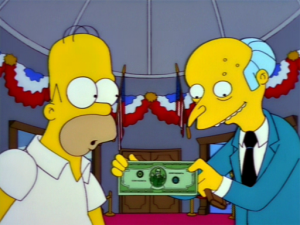Would it be possible and is it legal?
Josh Elliott-Traficante
 With the US Treasury rapidly closing in on another debt limit ceiling, the idea of minting trillion dollar platinum coins to get around Congressional approval of a debt limit hike has gained some steam in the pundit world and with the public at large. It has even spawned the twitter hashtag #mintthecoin and a White House petition in support of the proposal.
With the US Treasury rapidly closing in on another debt limit ceiling, the idea of minting trillion dollar platinum coins to get around Congressional approval of a debt limit hike has gained some steam in the pundit world and with the public at large. It has even spawned the twitter hashtag #mintthecoin and a White House petition in support of the proposal.
The idea was first posited by analyst Chris Krueger at Guggenheim Securities’ Washington Research Group as part of a piece looking at methods for raising the debt limit. James Pethokoukis, of AEI, a Washington DC based think tank, picked up on the idea in early December, bringing it to a larger audience. While there are enormous concerns regarding both the inflationary risk and the expansion of Presidential powers, would it even be possible to do?
The argument is based on a quirk in current law [31 USC §5112 (k)] that allows the Secretary of the Treasury to mint platinum bullion coins of any denomination. Therefore, the argument goes, Tim Geitner, or more likely his successor as Treasury Secretary, could order the Mint to create two Trillion dollar platinum coins. The coins would then be deposited in the Fed and then sent to the Treasury. Though the coins themselves would not contain $1 Trillion worth of platinum, through seigniorage they would be worth their face value. Once in the Treasury, there would be no difference between the two coins and money taken in by taxes, so payments could be drawn against their value. Thus, by creating $2 trillion in new money, the debt limit, while still existing, becomes a moot point as there would be money to pay for everything without issuing new debt.
The legality of such a maneuver is questionable; even two former Mint Directors have differing opinions on the issue. Philip Diehl, who was director when the statue in question was signed into law, argues that it is indeed a legal course of action. Former Director Edmund Moy, however, has some serious doubts on whether the coin would be worth a $1 Trillion a piece. Since the coin could not contain $1 trillion in platinum, therefore it has to be worth face value for the plan to work. ($1 trillion represents more than 1100 times the amount of platinum ever mined.) However, to be worth face value, he continues, the coin has to be in circulation, i.e. in use by the general public. Coins for circulation come under Congressional purview, so the body would have to pass legislation to produce them, putting the coin on the same path that it was explicitly created to circumvent.
The issue gets even more interesting when looking to the original purpose of the law, authored by former Congressman Mike Castle of Delaware. The language of Public Law 104-208 actually deals with commemorative coins and was in response to collectors’ complaints that the platinum coins being minted were out of reach of most people, due to the high value. The legislation was designed to allow the Treasury to fix this very specific problem and nothing more. Castle told the Washington Post that this potential loophole “…was never the intent of anything that I drafted or that anyone who worked with me drafted. It seems to me that whatever is being proposed here is a stretch beyond anything we were trying to do.” While arguing legislative intent before a court can be a tall order, given the very short time frame between passage and question, the fact that the concept of using the law to create fiscal policy with the platinum coin statute when under deliberation was not considered, combined with such an unequivocal statement by the law’s author, were the Obama administration to go on this path, any Federal judge who was worthy of the bench would rule against the government.
It should be noted that both Krueger and Pethokoukis thought and still think that the chances of this method being used as solution debt crisis are very small. Krueger noted that the “effects on the currency market and inflation are unclear, to say the least.” The creation of trillion dollar coins as a work around for the debt crisis has been lambasted by financial institutions such as Bank of America, which called it a “trillion dollar tooth-fairy.” Given the reaction of one of the nation’s largest banks, bond rating agencies probably would not look too kindly on the idea either.
Returning to the original question: would it be possible to do? Given the way the law is written it would seem so, however, the fact that it could not possible be made with $1 trillion worth of platinum, calls its value into question. Since no one could possibly use it as currency, thus eliminating the gain from seigniorage, would it really be worth $1 trillion? In addition, it remains unclear if the statute in question, since it deals with commemorative coins, would even apply.

